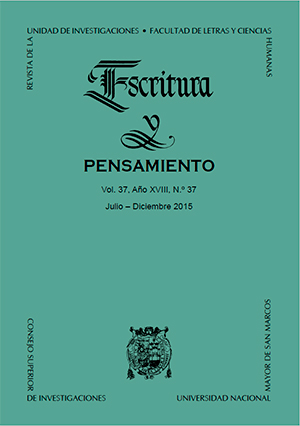ANIMACY AND AGENCY IN CONSTRUCTIONS OF QUECHUA TOPONYMY OF AURAHUÁ-CHUPAMARCA: A COGNITIVE APPROACH
DOI:
https://doi.org/10.15381/escrypensam.v18i37.13693Keywords:
Quechua toponymy, Aurahua-Chupamarca, animacy, agency, cognitive linguistics.Abstract
In this article, we deal with formal aspects (i.e., morphology) and conceptualization (i.e., semantics) in animacy and agency, two evidentiable processes in Quechua toponymy of Aurahuá-Chupamarca. In the analysis we rely on theoretical assumptions of cognitive linguistics; specifically on the theoretical proposals of Yamamoto (2006), Lakoff and Johnson (2003), Lakoff and Turner (1989) and Langacker (1987, 2008). On the one hand, the results let us show the different kinds of morphological structures used in animacy and agency in the abovementioned toponymy. Secondly, they let us distinguish these processes and let us propose them as cognitive mechanisms responsible for naming the geographical entities in the immediate space environment of Quechua speaking people.Downloads
Published
Issue
Section
License
AUTHORS RETAIN THEIR RIGHTS:
a. The authors retain their trademark and patent rights, and also over any process or procedure described in the article.
b. The authors retain the right to share, copy, distribute, execute and publicly communicate the article published in the Escritura y Pensamiento (for example, place it in an institutional repository or publish as part a book), with acknowledgment of its initial publication by Escritura y Pensamiento.
c. Authors retain the right to make a subsequent publication of their work, to use the article or any part of it (for example: a compilation of their work, lecture notes, thesis, or for a book), provided that they indicate the source of publication (authors of the work, journal, volume, number and date).





